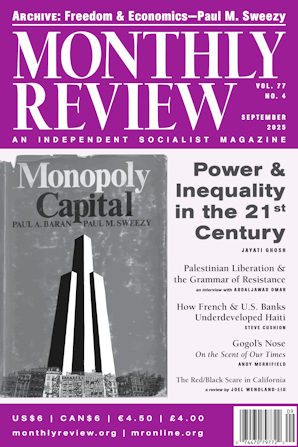Also in this issue
- Black Scare in California: Blacks, Reds, and Revolution in the 1960s and '70s
- Freedom and Economics
- Gogol's Nose: On the Scent of Our Times
- Neocolonialism through Debt: How French and U.S. Banks Underdeveloped Haiti
- The Grammar of Resistance: Rethinking Palestine Beyond Pity and Fear
- Power, Control, Inequality, and Democracy in the Twenty-First Century
Article by The Editors
- January 2026 (Volume 77, Number 8)
- December 2025 (Volume 77, Number 7)
- November 2025 (Volume 77, Number 6)
- October 2025 (Volume 77, Number 4)
- July-August 2025 (Volume 77, Number 3)
- June 2025 (Volume 77, Number 2)
- May 2025 (Volume 77, Number 1)
- April 2025 (Volume 76, Number 11)
- March 2025 (Volume 76, Number 10)

